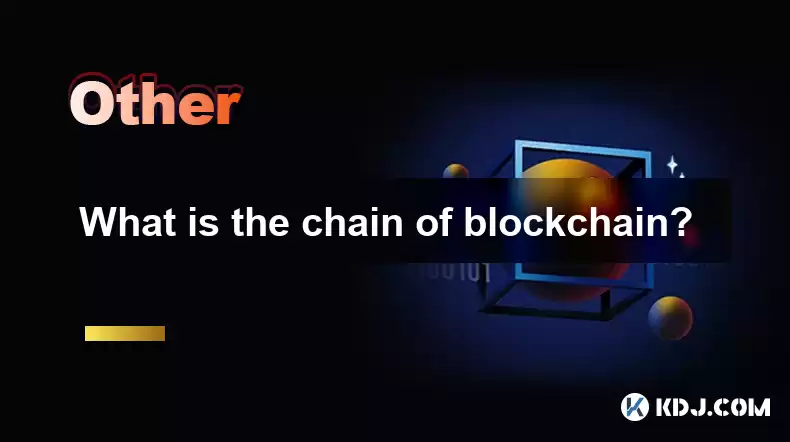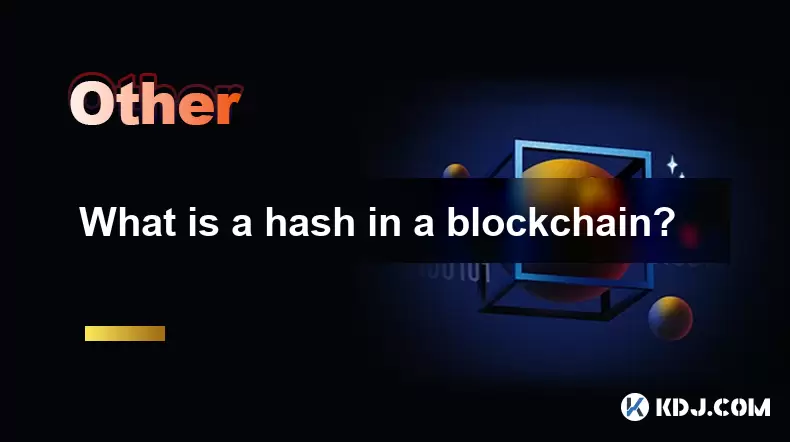-
 Bitcoin
Bitcoin $113900
-1.39% -
 Ethereum
Ethereum $3517
-4.15% -
 XRP
XRP $3.009
1.59% -
 Tether USDt
Tether USDt $0.9997
-0.04% -
 BNB
BNB $766.8
-1.41% -
 Solana
Solana $164.6
-2.38% -
 USDC
USDC $0.9998
-0.02% -
 TRON
TRON $0.3277
0.65% -
 Dogecoin
Dogecoin $0.2023
-1.67% -
 Cardano
Cardano $0.7246
0.05% -
 Hyperliquid
Hyperliquid $38.27
-4.77% -
 Sui
Sui $3.528
-0.52% -
 Stellar
Stellar $0.3890
-0.73% -
 Chainlink
Chainlink $16.16
-2.69% -
 Bitcoin Cash
Bitcoin Cash $539.9
-4.38% -
 Hedera
Hedera $0.2425
-2.00% -
 Avalanche
Avalanche $21.71
-0.97% -
 Toncoin
Toncoin $3.662
5.73% -
 Ethena USDe
Ethena USDe $1.000
-0.02% -
 UNUS SED LEO
UNUS SED LEO $8.964
0.35% -
 Litecoin
Litecoin $107.7
2.33% -
 Shiba Inu
Shiba Inu $0.00001223
-0.40% -
 Polkadot
Polkadot $3.617
-0.97% -
 Uniswap
Uniswap $9.052
-2.49% -
 Monero
Monero $295.1
-3.79% -
 Dai
Dai $0.9999
0.00% -
 Bitget Token
Bitget Token $4.315
-1.85% -
 Pepe
Pepe $0.00001060
0.11% -
 Cronos
Cronos $0.1342
-2.72% -
 Aave
Aave $256.0
-0.87%
What is the chain of blockchain?
Blockchain's core is a chronologically ordered chain of interconnected blocks, each containing verified transactions. This structure ensures transparency, security, and immutability, though different blockchains utilize varying consensus mechanisms.
Mar 11, 2025 at 01:21 pm

Key Points:
- Blockchain's core is a chain of interconnected blocks.
- Each block contains verified transactions.
- This chain provides transparency and security.
- Different blockchains use varying consensus mechanisms.
- Understanding the chain is crucial to understanding blockchain technology.
What is the Chain of Blockchain?
The term "blockchain" itself hints at its fundamental structure: a chain. But what exactly is this chain? It's not a physical chain, of course, but a chronological sequence of data blocks. Think of it as a digital ledger, constantly growing and updated across a network of computers. Each block securely stores a batch of validated transactions.
These transactions could be anything from cryptocurrency transfers to supply chain information or even voting records, depending on the specific blockchain's design. The critical aspect is that once a block is added to the chain, it becomes virtually immutable. Altering past transactions requires altering every subsequent block, a task computationally infeasible due to the decentralized and secured nature of the network.
How are Blocks Linked Together?
The magic lies in the linking mechanism. Each block contains a cryptographic hash – a unique fingerprint – of the previous block. This creates an unbroken chain of linked blocks. If someone tries to tamper with a block, its hash will change, instantly breaking the chain and making the alteration detectable by the network. This sophisticated linking ensures data integrity and prevents fraudulent activities.
The Role of Consensus Mechanisms:
The process of adding new blocks to the chain is governed by consensus mechanisms. These mechanisms are algorithms that ensure agreement among network participants on the validity of transactions and the order in which they are added to the blockchain. Different blockchains utilize different consensus mechanisms, each with its own strengths and weaknesses.
Some popular examples include Proof-of-Work (PoW), used by Bitcoin, requiring significant computational power to validate transactions, and Proof-of-Stake (PoS), employed by Ethereum, which relies on the stake (amount of cryptocurrency held) of validators to secure the network. The choice of consensus mechanism significantly impacts a blockchain's scalability, security, and energy consumption.
Understanding Block Content:
A single block typically contains more than just transaction data. It usually includes a timestamp indicating when the block was created and a nonce, a random number used in the mining process (for PoW blockchains). This comprehensive information contributes to the block's unique identity and integrity within the chain. The specific data fields within a block can vary based on the blockchain's purpose and design.
Immutability and Security:
The chained structure and cryptographic hashing contribute to blockchain's famed immutability. Once data is recorded on the blockchain, it's incredibly difficult, if not impossible, to alter it without detection. This feature makes blockchain ideal for applications requiring high levels of trust and transparency, such as financial transactions and supply chain management. The distributed nature of the ledger, replicated across numerous nodes, further enhances security and resilience.
Scalability Challenges:
While the chained structure provides security, it also presents scalability challenges. Adding blocks to the chain involves a process of validation and verification, which can become slower and more resource-intensive as the network grows. This is why various solutions, such as layer-2 scaling solutions, are being developed to improve the transaction throughput of blockchains.
The Significance of the Blockchain Chain:
The chain itself is the foundation of blockchain technology. It's the core structure that provides security, transparency, and immutability. Understanding this chain is crucial to grasping the broader implications of blockchain technology and its potential to revolutionize various industries. Without the chain, the entire system would collapse. The integrity of the system relies entirely on the continuous, secure linking of these blocks.
Common Questions and Answers:
Q: Can the blockchain chain be broken?
A: While incredibly difficult, theoretically, the chain could be broken if a malicious actor gains control of a significant majority of the network's computing power (in PoW systems) or stake (in PoS systems). However, the design of most blockchains makes this extremely improbable due to their decentralized and distributed nature.
Q: How is the length of the blockchain chain determined?
A: The length of the blockchain chain is not predetermined. It grows continuously as new blocks are added, reflecting the ongoing accumulation of validated transactions. The rate of growth depends on factors like the blockchain's transaction volume and the speed of its consensus mechanism.
Q: What happens if a block is corrupted?
A: If a block is corrupted, the network will detect the inconsistency due to the broken cryptographic hash link. The network will then reject the corrupted block, and the correct chain will continue to grow. This self-correcting mechanism is a key aspect of blockchain's resilience.
Q: Are all blockchains the same?
A: No, different blockchains have different structures and functionalities. While the fundamental concept of a chain of blocks remains, the specifics – such as block size, consensus mechanism, and transaction types – vary significantly across different blockchain platforms. Each blockchain is designed to suit specific use cases and requirements.
Q: What are the advantages of using a blockchain chain?
A: The chained structure offers several advantages, including enhanced security through cryptographic hashing, transparency due to the public nature of the ledger, and immutability, preventing unauthorized alteration of past transactions. These characteristics make blockchains suitable for various applications requiring high levels of trust and data integrity.
Disclaimer:info@kdj.com
The information provided is not trading advice. kdj.com does not assume any responsibility for any investments made based on the information provided in this article. Cryptocurrencies are highly volatile and it is highly recommended that you invest with caution after thorough research!
If you believe that the content used on this website infringes your copyright, please contact us immediately (info@kdj.com) and we will delete it promptly.
- Bitcoin Strategy: Saylor's Not Hoarding, He's Building an Empire
- 2025-08-02 22:30:12
- Bitcoin Bloodbath: Macro Pressures and Liquidations Unleash Crypto Chaos
- 2025-08-02 22:30:12
- Worldcoin, Identity, WLD Price: Decoding the NYC Crypto Buzz
- 2025-08-02 21:10:12
- Shiba Inu: Utility and Community Strength Drive Crypto's Evolution
- 2025-08-02 21:50:12
- Crypto Donations, Trump PAC, and Bitcoin: A New York Minute on Political Coin
- 2025-08-02 20:30:12
- Crypto Market Under Pressure: Bearish Momentum and Rising Volatility Take Hold
- 2025-08-02 20:30:12
Related knowledge

What is the difference between on-chain and off-chain transactions?
Aug 02,2025 at 04:22pm
Understanding On-Chain TransactionsOn-chain transactions refer to digital asset transfers that are recorded directly on a blockchain ledger. These tra...

What is the double-spending problem and how does blockchain prevent it?
Aug 02,2025 at 01:07pm
Understanding the Double-Spending ProblemThe double-spending problem is a fundamental challenge in digital currency systems where the same digital tok...

What is the difference between a blockchain and a database?
Aug 01,2025 at 09:36pm
Understanding the Core Structure of a BlockchainA blockchain is a decentralized digital ledger that records data in a series of immutable blocks linke...

How does blockchain handle scalability?
Aug 02,2025 at 02:58pm
Understanding Blockchain Scalability ChallengesBlockchain scalability refers to a network's ability to handle an increasing volume of transactions wit...

What is a hash in a blockchain?
Aug 02,2025 at 05:28am
Understanding the Concept of Hash in BlockchainA hash in the context of blockchain technology refers to a unique digital fingerprint generated by a cr...

What is a hash in a blockchain?
Aug 02,2025 at 04:43am
Understanding the Concept of Hash in BlockchainA hash in the context of blockchain technology refers to a unique digital fingerprint generated by a cr...

What is the difference between on-chain and off-chain transactions?
Aug 02,2025 at 04:22pm
Understanding On-Chain TransactionsOn-chain transactions refer to digital asset transfers that are recorded directly on a blockchain ledger. These tra...

What is the double-spending problem and how does blockchain prevent it?
Aug 02,2025 at 01:07pm
Understanding the Double-Spending ProblemThe double-spending problem is a fundamental challenge in digital currency systems where the same digital tok...

What is the difference between a blockchain and a database?
Aug 01,2025 at 09:36pm
Understanding the Core Structure of a BlockchainA blockchain is a decentralized digital ledger that records data in a series of immutable blocks linke...

How does blockchain handle scalability?
Aug 02,2025 at 02:58pm
Understanding Blockchain Scalability ChallengesBlockchain scalability refers to a network's ability to handle an increasing volume of transactions wit...

What is a hash in a blockchain?
Aug 02,2025 at 05:28am
Understanding the Concept of Hash in BlockchainA hash in the context of blockchain technology refers to a unique digital fingerprint generated by a cr...

What is a hash in a blockchain?
Aug 02,2025 at 04:43am
Understanding the Concept of Hash in BlockchainA hash in the context of blockchain technology refers to a unique digital fingerprint generated by a cr...
See all articles

























































































